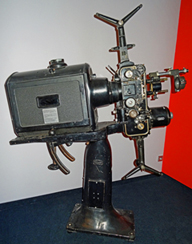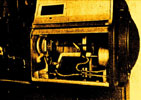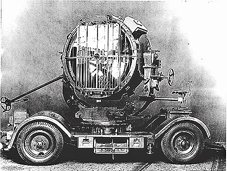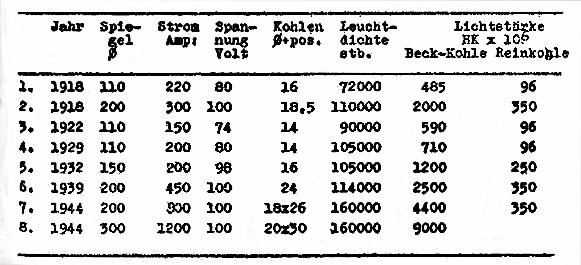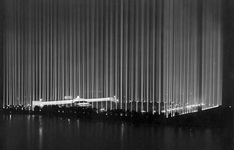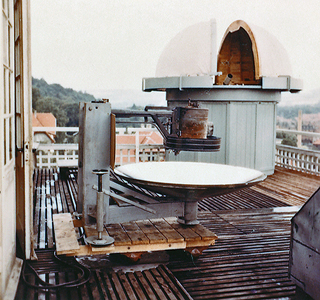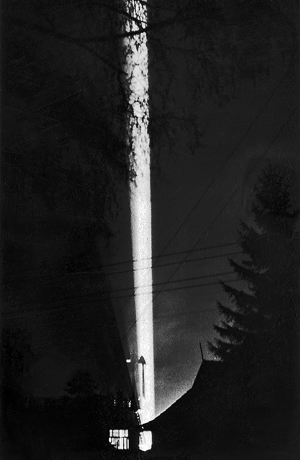demand, and the searchlight strongly appealed to him as a valuable improvement over existing lamps, and moreover as he was on such close terms with the heads of the Navy Department he thought he would have very little trouble in introducing this lamp under the most favorable conditions of that Department under his auspices. (...)
He invited Mr. Beck and me to visit his factory and showed the wonderful facilities he had for manufacturing this light, and believed Mr. Beck would be so favorably impressed with his equipment that he would readily make arrangements with Mr. Sperry.(...)
We visited the factory and were very courteously shown through the entire factory (...) and he (Sperry, note of the author) pointed out the drafting room and he stated that it was ready for Mr. Beck to come in at once and to start his work. He said that every facility would be given Mr. Beck to carry on his work.
Mr. Sperry in the various talks he had with myself never intimidated, nor did I hear from anyone else that Mr. Sperry was working on a searchlight of any character whatever.
I might add that in my conference with Admiral Griffin, the head of the Steam Engineering, Navy Department, and Lieutenant Commander Sparrow, his Assistant in charge of the Electrical Division at that Bureau, and Lieutenant McDowell, Test Officer of the Navy Yard, it was reiterated time and time again that this invention was to them absolutely new and novel, and that if the tests bore out the claims of the inventor, they were all ready to recommend it to their Department.
The outcome of the visit to Mr. Sperry's factory was that Mr. Sperry wished Mr. Beck to submit to him a business proposition whereby he could buy or control his invention, and patents in the United States. There were therefore some negotiations between Mr. Beck and Mr. Sperry, I myself not taking part, as I was ill at the time at my home. The outcome of this was that Mr. Sperry wrote to Mr. Beck, which was undated, which was received by Mr. Beck about November 10, 1914, the receipt of which was acknowledged by Mr. Beck about November 12th..
This Sperry letter outlined the only terms on which he would do business, which terms were rejected by Mr. Beck, which terminated the negotiations. We entirely dismissed Mr. Sperry from our minds and gave him no more thought, as we never for a moment imagined that he contemplated marketing the invention without authority from the inventor, Beck.
Meanwhile the test had been going on in the Navy Department and had been completed, and a report was made by Lieutenant McDowell, which was extremely favorable, and later the tests on the battleship 'Texas' were reported on and this also was extremely favorable. The Navy Department officially recommended that this type of lamp be adopted and I had negotiations with the Navy Department in order to enable me to put the lamp on a business basis in this country and to secure the needed facilities to manufacture the lamps so that the Navy could purchase them if they ordered them.
On or about the 15th of November, or immediately following the termination of the negotiations with Mr. Sperry I commenced negotiations with the General Electric Company relative to marketing the invention. I had before me the favorable reports and recommendations of the Navy Department and also the fact that they were willing to place orders for these lamps. After negotiating for some weeks a contract was finally made on July 25th (here Mr. Auerbacher is mistaken: the correct date is: january 21 in 1915, annotation of the author), with the General Electric Company whereby they agreed to purchase Mr. Beck's patent under certain terms.
Meanwhile the Navy Department had placed an order with us for eight lamps. Some time in January, or February 1915, the Navy Department put out specifications for more lamps of the same type, and we were very much astonished to learn that Mr. Sperry put in a bid under these specifications. We first then became aware of the fact that he had used the knowledge obtained in the negotiations previously had and also the knowledge he had gained in the Navy Yard by examination of the Beck lamp, and that he was preparing to copy Mr. Beck's lamp in order to meet these specifications of the Navy Department, which covered the salient features of this lamp.
I therefore tried to find out how it came that Sperry would attempt this and learned that the Secretary of the Navy was very anxious to obtain competition and was advised by some of the officers that it was through the encouragement of the Secretary that Mr. Sperry was prompted to go into the business of trying to duplicate Mr. Beck's invention".
Decisive for the agreement out of court between GE and Sperry Gyroscope 1920 - and a hint to Sperry´s actual patent infringement - was the judgement on both sides that a comprehensive patent protection for the respective high intensity searchlight was not available. Therefore a settlement was arranged according to which the Sperry Gyroscope Company had to pay roylaties only for its 150-Ampère searchlights to General Electric because of corresponding patents of Heinrich Beck, whereas their 75-Ampère-projector and studio lamp searchlight as under the agreed upon limit of 100 Ampère were not affected. On his part the representative of Sperry, Thompson, made the counter proposal to General Electric to acquire rights of the improved commercial searchlight that the Sperry Gyroscope was aiming to patent. If GE wanted to use the studio lamp searchlight under license, which Sperry Gyroscope had developed and patented, both companies could possibly renounce mutually on demands for royalties, was the assessment of Thompson.
In 1915 Sperry had been appointed to the Naval Consulting Board, on which he served until 1929. This appointment institutionalised the informal relationship Sperry had established with the Navy before the war. Although Sperry had to acknowledge the priority of the GE/Becksearchlight no demands for royalties could be claimed after the United States entered the war.
Heinrich Beck, according to his diary, got in a moral conflict to be involved in war armaments against his home country after the United States declared war to Germany in 1917. Nevertheless there were also regulations in the treaty between him and General Electric that would end his work for GE and all payments by the company in case the USA should get involved in the war. However he and his family were left almost completely undisturbed und was allowed to move freely except of occasional registrations at the police.
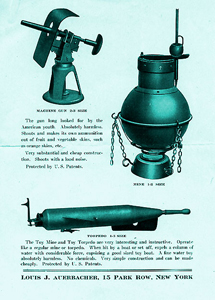 The German inventor ended his searchlight experiments for General Electric and occupied himself with the invention of military toys in a small cellar workshop, which was probably quite popular during the first world war und for which were also issued some patents.
The German inventor ended his searchlight experiments for General Electric and occupied himself with the invention of military toys in a small cellar workshop, which was probably quite popular during the first world war und for which were also issued some patents.
Already in 1912 he had been given a US-patent for a heating apparatus for instruments. General Electric developed an army searchlight on base of the High Intensity Beckarc Carbon Lamp, which - due to the required mobility - had to be substantially lighter and at the same time more durable than the searchlights used in the navy.
As soon as it was possible to leave the country after the end of the war, the family returned home, although Heinrich Beck got a luring offer as the manager of the searchlight division by General Electric. Instead it was agreed between the General Electric and Heinrich Beck on July 1 1920 that the German inventor should still work for three more years as a consultant for General Electric und to give the company first right to purchase from him all the inventions he would make in this period of time,
|
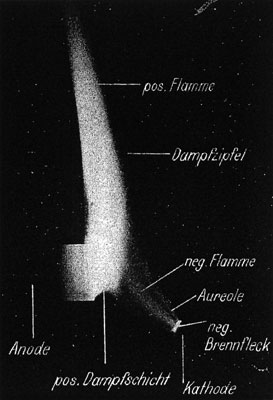
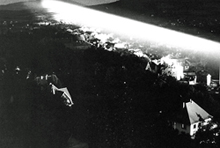
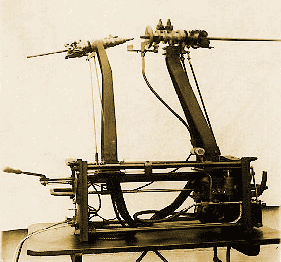

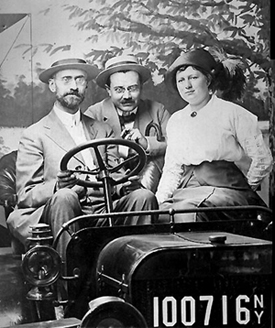
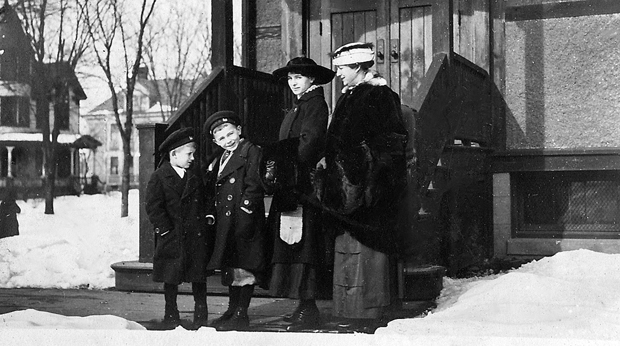

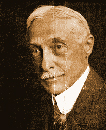
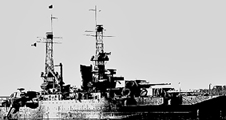
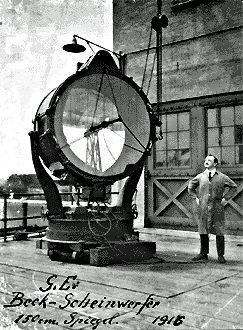 "(...) My attention has been called to the issue of the 'Electrical World' for Sept. 13, 1916, specifically to an article descriptive to a searchlight credited to Elmer A. Sperry. I have seen such and similar articles (…) with considerable astonishment, since I found myself on very familiar ground, having seen every essential element of the reputed Sperry searchlight several years ago in the searchlight of Heinrich Beck, of which I furnished you data, and which you embodied in an article in the issue of the 'Electrical World' for July 25, 1914.
"(...) My attention has been called to the issue of the 'Electrical World' for Sept. 13, 1916, specifically to an article descriptive to a searchlight credited to Elmer A. Sperry. I have seen such and similar articles (…) with considerable astonishment, since I found myself on very familiar ground, having seen every essential element of the reputed Sperry searchlight several years ago in the searchlight of Heinrich Beck, of which I furnished you data, and which you embodied in an article in the issue of the 'Electrical World' for July 25, 1914.



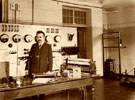
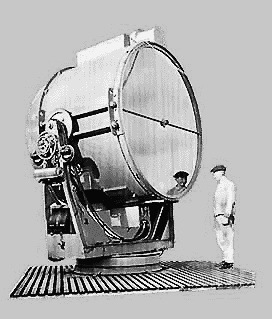
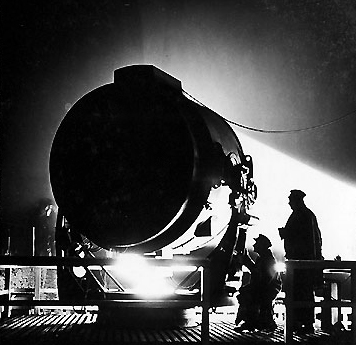 In 1920 a report came out in the Elektrotechnische Zeitschrift with the headline
In 1920 a report came out in the Elektrotechnische Zeitschrift with the headline
